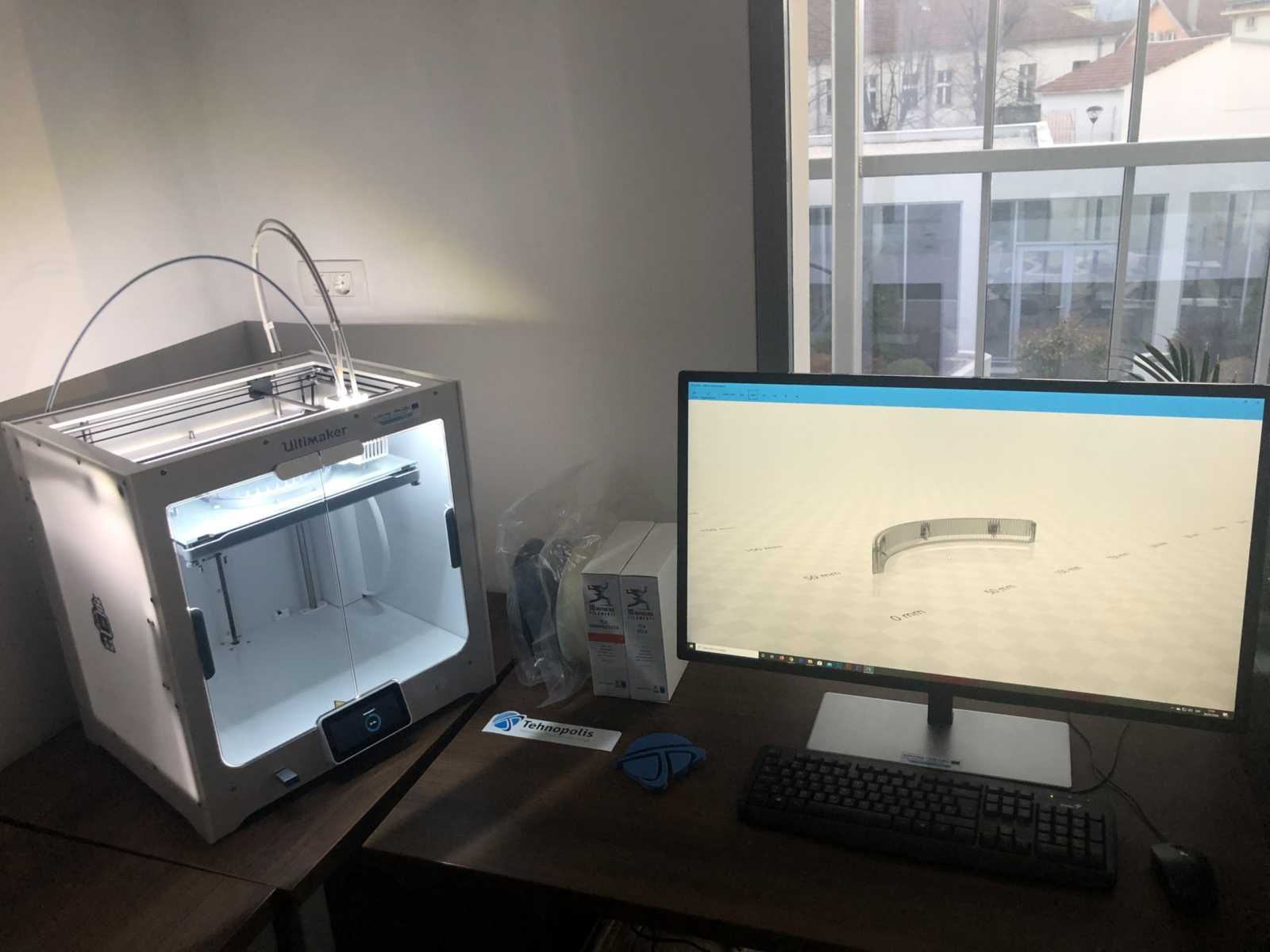
In the fight against COVID-19
At the initiative and coordination of the Science and technology park, the Faculty of Electrical Engineering of the University of Montenegro, and the Innovation and Entrepreneurship Center Tehnopolis from Nikšić, with full support from the Ministry of Science of Montenegro, a broader coalition for 3D printing in Montenegro was formed. Many other colleagues from Montenegro have also started 3D printing, primarily protective visors for healthcare workers, and have already delivered certain quantities. We are negotiating with numerous companies and institutions to unite the 3D printing industry in Montenegro and help the healthcare system in its ongoing battle. We have been provided with 3D printers by the Faculty of Mechanical Engineering of the University of Montenegro, Hiron Creative Lab, Arhitektonika, Drone Studio, Vakom, 3D Print Montenegro, and 3D Fabrika, with whom we have formed a 3D cluster that will produce these protective materials free of charge in the coming days, as long as needed. The capital city of Podgorica has also put its 3D printing resources into operation in support of the healthcare system through the competence center, and has already made a significant contribution. In addition to the aforementioned institutions and companies, a very important cluster has been created by our colleagues from 3D Soba and Open Box Studio, University of Donja Gorica, Mtel Digital Factory, elementary schools ‘Sutjeska’, ‘Štampar Makarije’ and ‘Oktoih’, the Library for the Blind of Montenegro, and the company Mašinski Centar – Remid Vis d.o.o.
In the upcoming period, we will join forces and work together on the production of protective visors and equipment in cooperation with the National Coordination Body and the Institute for Public Health.
In addition to the components we are currently printing, we are continuously working on finding new 3D models that would better meet the needs of the healthcare system. For this reason, we have utilized our international contacts and communicated with our partners from several countries to join efforts and use 3D printers to find solutions for more complex problems.
Through contact with partners from the Czech Republic, we received models for printing protective masks that have been certified by the Czech healthcare system. The models were provided to us through the Czech technical university, which has been working hard on developing a mask printing model that would be helpful, primarily for healthcare workers, in this situation. Additionally, STP’s partner, the research institute Leitat from Barcelona, with support from companies like Airbus, Seat, and HP, has designed a medically certified field ventilator that is made with the help of 3D printers. This ventilator has been certified by the healthcare system in Spain and is currently in use. If our capacities can support the printing of a sample of such a ventilator, we would start printing it. After verifying its functionality, it could be of great help to our healthcare system. We would also like to mention the collaboration with the organization “Visionaries of Serbia,” which will provide us with a portion of the materials and pre-printed visor frames.
In the upcoming period, we will also utilize other methods of producing visors besides 3D printing, such as cutting acrylic or plastic injection molding, which could help us produce significant quantities of these products in the shortest time possible.
Considering the high workload faced by healthcare institutions in Montenegro at this time, we are aware of the lack of time they have to dedicate to disinfecting the delivered items. Therefore, we have come up with the idea to handle the disinfection and packaging of the items in the IPC Tehnopolis laboratory. This process significantly reduces the time it takes for the institution to prepare the items for use, as they are delivered already prepared. The disinfection process for protective medical equipment and its further transport is carried out as follows:
All parts of the protective medical equipment are treated with 70% alcohol and delivered to the laboratory;
The room where the assembly and packaging process takes place, as well as the work surfaces where the materials are placed, are previously disinfected by using UV lamps and wiping the surfaces with disinfectants. All further actions related to this process are carried out under controlled conditions in this room;
The person assembling and packaging all parts of the protective equipment for healthcare workers wears protective gear: gloves, mask, cap, and gown;
When the equipment is assembled, it is packed in a vacuum bag or regular bag, depending on available resources;
Then, the packed equipment is partially vacuum-sealed, and if packed in regular bags, they are sealed;
The packed equipment is once again exposed to UV rays before being packaged and transported.
These are just some examples of how science and innovation can serve public health and society as a whole. The efforts made by the Ministry of Science through the funding of various innovative and development projects in Montenegro greatly contribute to the community’s ability to deal not only with emergencies but also with the challenges of modern society in general. For this reason, in the future, greater attention should be directed towards these segments of development based on innovations and the latest technologies that support our society in various fields. Science and technology in many spheres…


